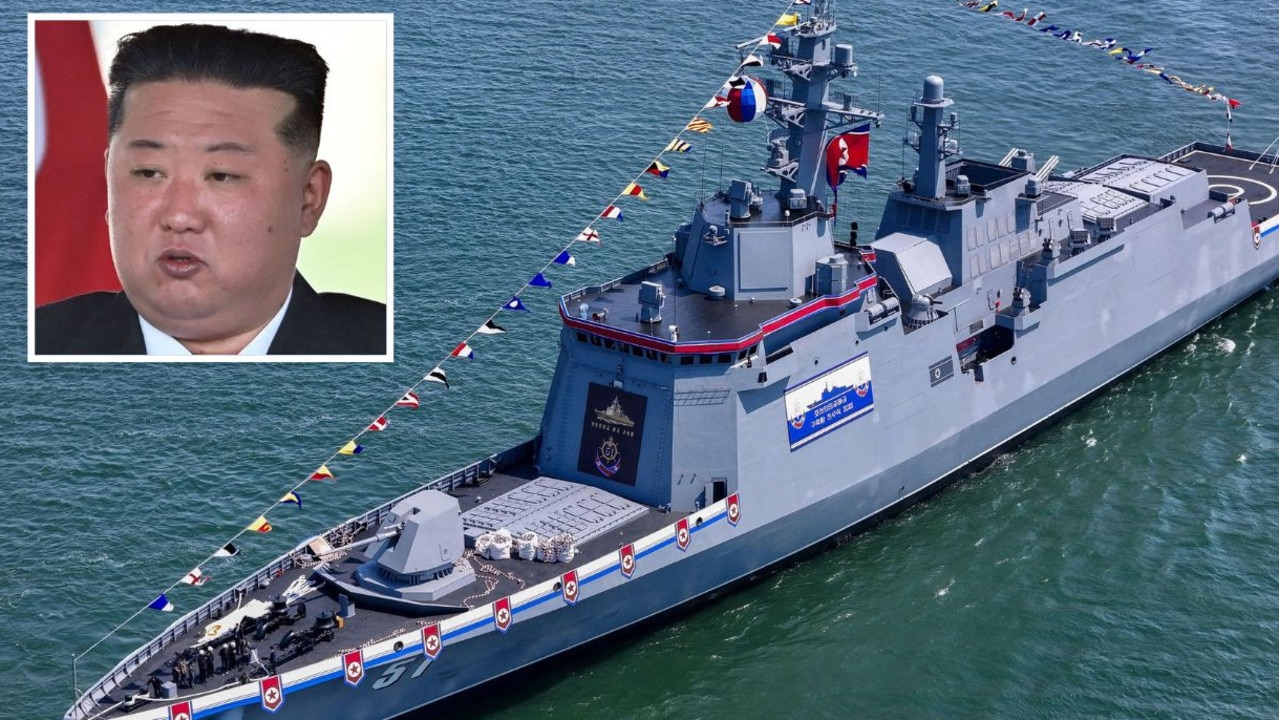Australia to pump tens of billions into defence amid ‘new Indo-Pacific missile age’
Australia will pump tens of billions of dollars into boosting its defences as the country slides into a “new Indo-Pacific missile age”.

Australia will pump tens of billions into boosting the country’s missile strike and defence abilities under a new plan to set the country up for a large-scale conflict.
Industry Minister Pat Conroy painted a bleak global picture as he unveiled the Guided Weapons and Explosive Ordnance (GWEO) Plan in a National Press Club address on Wednesday.
Against a backdrop of a major war forecast by 2034, the plan laid out a roadmap to massively expand Australia’s missile arsenal and build up the domestic munitions manufacturing base.
“These are troubling times,” Mr Conroy told the NPC.
“We are witnessing conflicts in Europe and the Middle East. While these conflicts are unfolding on the other side of the world, they are deeply affecting the lives of Australians and have significant implications for Australia’s international interests.
“In our own region we face the most challenging strategic outlook since the Second World War.”

Mr Conroy, who also serves as minister for the Pacific, was not coy about where the challenge was coming from.
“Strategic competition between the United States and China is a primary feature of Australia’s security environment,” he said.
“That competition is at its sharpest in our region, the Indo-Pacific. We live in a complex and uncertain world.”
Growing numbers of missiles, according to Mr Conroy, were a driving force of regional uncertainty.
He said they were getting faster, going further and becoming more pricise.
“In this world, we have a choice. We can watch and wring our hands, or we can respond,” he said.
“We can make sure that Australia can hold an adversary at risk through our northern approaches.
“We can seek to deter conflict or attempts to coerce Australia by force and, in this way, contribute to regional security.
“We can work closely with our ally, the United States, and with other key partners in the Indo-Pacific, such as Japan and the Republic of Korea – partners that share our concerns and are prepared to strengthen cooperation in support of shared interests.”
The GWEO Plan pledged up to $74bn towards GWEO, with $35bn alone going into long-range strike capabilities.
Defence reviews have highlighted long-range strike as a key weakness for Australia.
Among the sweeping arsenal upgrades are hundreds of Tomahawk cruise missiles, which would be deployed to the Navy’s Hobart Class destroyers.
Tomahawks have a range north of 2500 kilometres and are only used by the US and the UK.
“Our new Tomahawk missiles will be in our fleet by the end of this year,” Mr Conroy said.
“They will increase our Navy’s maximum weapon range more than ten-fold.”
It follows an announcement last week that the Navy would be kitted out with American made SM-2 IIIC and SM-6 missiles under a $7bn deal.

The Air Force would be geared up with a range of new projectiles, including specialised radar-targeting missiles and ultra stealthy “low-altitude sea-skimming” medium range missiles.
The plan also provided for greater strike capabilities for the Army, giving it more short-range, surface-to-surface rocket systems.
Mr Conroy said that because Australia, like many countries, was vulnerable to supply chain troubles, more guided weapons and munitions needed to manufactured at home.
“We talk about buying defence capabilities off the shelf, but when it comes to munitions, the global shelves are not being restocked as quickly as we would like,” he said.
“This has been compounded by supply chain bottlenecks, a lack of production capacity and a shortage of raw materials.
“There’s not much slack in the supply chain and lots of customers are waiting to be served.
“That’s why we need to make and maintain guided weapons and explosive ordnance in

Australia – this will make us more self-reliant, and more resistant to coercion.”
To help boost manufacturing, Mr Conroy announced the Albanese government would build a new Australian Weapons Manufacturing Complex, with an initial investment of $316 million.
It would be able to manufacture up to 4,000 Guided Multiple Launch Rocket Systems (GMLRS) and be the first such facility outside of the US.
Mr Conroy also announced the Albanese government was partnering with Thales Australia to produce 155-millimetre M795 artillery shells at the Benalla munitions facility.
“This will be the first dedicated facility outside the United States to
manufacture this artillery round,” he said.
“By 2028, it will produce 15,000 rounds a year – and it will have the capacity to scale up to produce 100,000 rounds a year, supporting 550 jobs.”
The latest announcement comes amid growing concerns of China’s assertiveness in the Indo-Pacific and sabre rattling around Taiwan.
Beijing has been pouring money into anti-ship ballistic missiles and late last month tested an intercontinental ballistic missile, the usual delivery system for a nuclear warhead.



